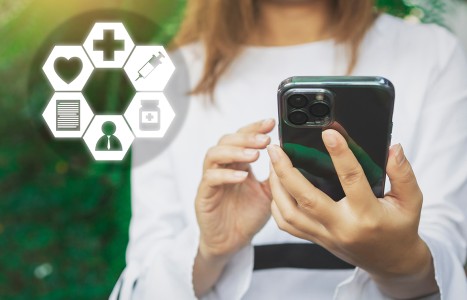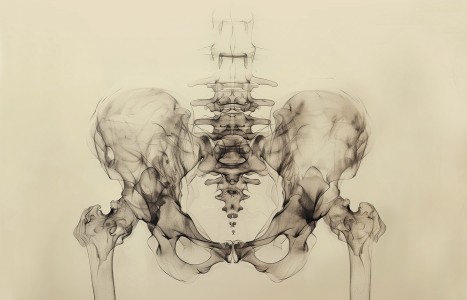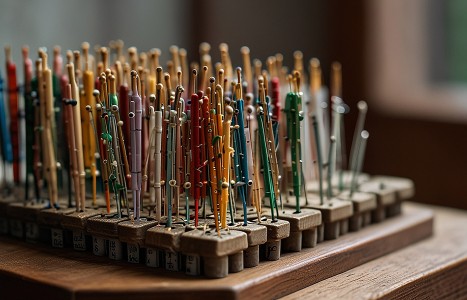People today want convenience, whether it be from their bank, credit card, favorite retail store, or restaurant. They demand it from the companies who hold their loyalty, including their health care providers (you). They don’t want to call and possibly be put on hold, and they want to use an app or schedule an appointment on your website. Here are three reasons your practice can gain by switching to online appointment scheduling.
Acupuncture and Asian Medicine at the American Public Health Association Annual Meeting
The theme of the American Public Health Association's (APHA) 133rd
annual meeting was 'Evidence-Based Policy and Practice." Held in Philadelphia in early December 2005, the conference hosted over 11,000 delegates, who met for dialogue and interchange of ideas related to their research, practice and public health experience.The Alternative and Complementary Health Practices Special Interest Group (ACHP), composing one of APHA's many sections, featured more than 40 presentations on a variety of topics, including Asian medicine and acupuncture. Some of the topic areas addressed by the discussions and poster presentations included professional education related to alternative and complementary approaches; increased prevalence of these approaches; CAM use in treating people with asthma; and the integration of CAM and public health. Other areas of interest on cutting-edge research included CAM use among minority populations; integrating CAM into hospital practice; and the use of CAM by people living with cancer. A number of presentations focused on massage and its use at the end of life, as well as with children who have cancer or other blood disorders.
Student interest and participation were especially evident in the ACHP arena. Some of the presentations described CAM use among college students. Schools of public health, medicine and other professions were represented by enthusiastic and energetic attendees, some of whom were involved in ACHP workshops and presentations.
Three presentations related specifically to acupuncture incorporated various methodologies. One described a national survey on acupuncture use; another discussed a randomized clinical trial for people living with HIV/AIDS; and the third presented an analysis of economic factors related to acupuncture treatment. Adapting models from other types of health care research, these presentations demonstrated that there are multiple ways of describing, assessing and evaluating acupuncture and its concomitant effects. Just as colleagues in other types of medicine and health care utilize a range of research methodologies, there is no need for acupuncturists to restrict ourselves to using the randomized clinical trial paradigm. Acupuncture treatment can be amenable to evaluation from a number of perspectives, and it behooves us to explore other valid research frameworks.
Adam Burke, Dawn Upchurch, Laura Chyu and Claire Dye, from San Francisco State University, presented data from the National Health Interview Survey (NHIS). The 2002 version of the survey included a supplemental set of questions on alternative and complementary health practices of the respondents. The survey specifically asked about the use of 27 different types of CAM therapies, including acupuncture. The authors analyzed data from over 31,000 respondents. Approximately 4 percent (over 1,200 individuals) reported using acupuncture at least once, with 1 percent reporting their use of acupuncture in the past 12 months. Although results of their final analysis will not be available until later this year, the authors discussed reasons for use and issues related to the geographic distribution of providers. Having acupuncture specifically included in this national survey venue represents a major step forward in the process of integrating acupuncture care and having it recognized for the valuable contribution it makes to the public's health and well-being (session 4293.0).
Burke, also the co-chair of the ACHP group, described the group's commitment to 'promoting the integration of more acupuncture and related services into the public health sector." He invited acupuncturists to consider joining APHA and participating in the ACHP.
Results of a clinical trial that examined the combined effects of relaxation techniques and acupuncture were presented by a group of investigators from Boston. Bei-Hung Chang, Uli Boehmer, Yue Zhao and Beth Sommers conducted an NCCAM-funded trial of the relaxation response with acupuncture for patients diagnosed with HIV/AIDS. The investigators reported on aspects of the study related to the feasibility of conducting a two-arm randomized trial of the relaxation response among HIV-positive individuals who received acupuncture treatment. Their presentation reported on participant experiences and the feasibility of using data based on self-reported changes (session 3004.0).
The intriguing aspect of this study was that the acupuncture treatment itself was not the object of evaluation; all study participants were receiving acupuncture treatment for symptoms related to their HIV/AIDS diagnosis. The study chose to focus on additional benefits that might accrue from adding audio tapes geared specifically to elicit the relaxation response (e.g., diaphragmatic breathing, deeper restfulness) to the treatment. These relaxation-specific tapes were compared to tapes of soft music only.
Study participants from the relaxation-specific arm reported feeling better than those with the soft music tapes. Individuals from this group also were more likely to report positive changes related to the emotional, physical and spiritual aspects of their lives, as well as increased feelings of peace and calmness.
The authors of this column presented the results of an observational assessment of 111 individuals receiving acupuncture, 76 who were having Chinese herbal consultations, and 77 who were receiving shiatsu treatments at their clinic in Boston. The purpose of this economic evaluation was to determine levels of client response after the implementation of a $5 increase in fees for all services. Health economists routinely determine consumer responsiveness to rate changes by measuring price elasticity, the degree to which consumers change their patterns of consumption following price increases. In health care demand studies, price elasticities have been calculated for all types of treatment, including outpatient ambulatory services, hospital care, urgent care and elective procedures. Price elasticity values usually are smaller in magnitude for emergency procedures than for elective care, indicating a greater level of value or need placed on the service (session 3077.0).
Immediately following the price increase, clients using acupuncture demonstrated the smallest amount of responsiveness (i.e., they had the smallest decrease in utilization), while the number of clients using shiatsu services showed the largest decrease. The level of utilization for individuals using the Chinese herbal consultations exhibited a value between the two other elasticity values. Although the evaluation could not answer why clients had differing levels of responsiveness to the price increase, study results can open new doors for investigators. Do people who use acupuncture have different expectations or perceptions of treatment than those who use Chinese herbs or shiatsu? Are differing values placed on the services by consumers? These are some of the issues the next level of study can address.
As the use of acupuncture and Asian medicine becomes more prevalent in American society, investigators interested in public health issues will have the opportunity to explore many issues and will only be limited by their own imaginations. The APHA has shown leadership and vision by inviting providers of Asian medicine to the table; it is up to us to respond.
To view abstracts related to the 2005 APHA Annual Meeting, visit apha.confex.com/apha/133am/techprogram.
Survey on HIV/AIDS and Asian Medicine: Participants Wanted
Karen Kaufman, PhD, LAc, Dipl. Ac., CH, of the University of Arizona, is conducting a national survey of providers of Asian health care (acupuncturists, herbalists, bodyworkers) who work with people living with HIV/AIDS. She is trying to assess the level of care being provided (how many people are receiving treatment, what types of treatment they request, etc.). The purposes of the survey are to determine how Asian medicine is being used by people with HIV/AIDS, and to describe the settings in which they are receiving care.
The survey is quite user-friendly and straightforward, asking about providers' experience and what types of continuing education or training they would like. The survey is anonymous and confidential, and takes about 20 minutes to complete.
As an incentive for completing the survey, there will be a drawing for a $250 gift certificate from Amazon.com. If anyone would like to be eligible to win, you can put your name and address in a self-addressed, stamped envelope provided for the survey response.
For more information on the survey, you can contact Dr. Kaufman at kkaufman@email.arizona.edu.
Editor's note: If you would like to comment on Ms. Sommers' and Ms. Porter's article, please contact Acupuncture Today by fax (714-899-4273) or e-mail (www.pathwaysboston.org).


